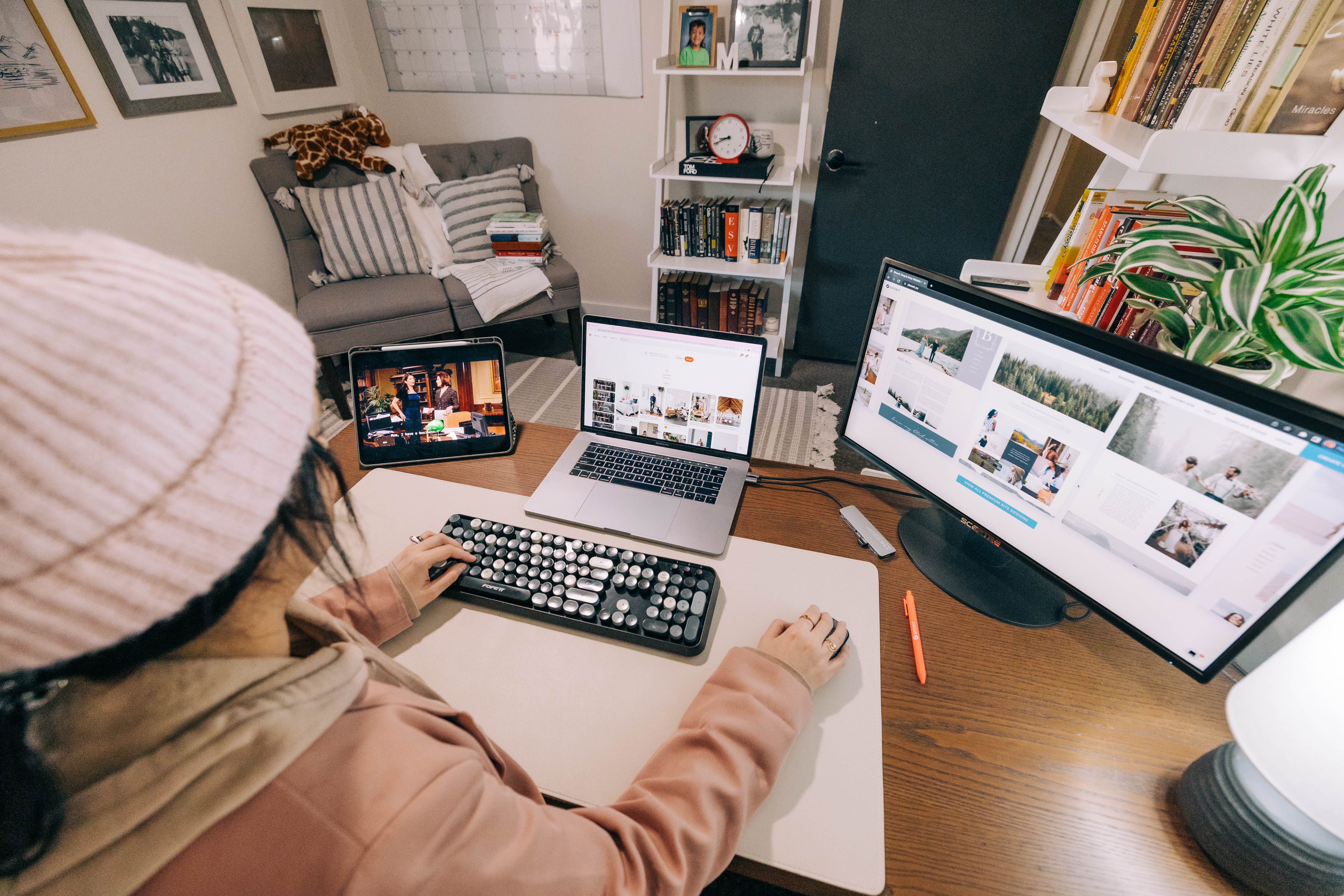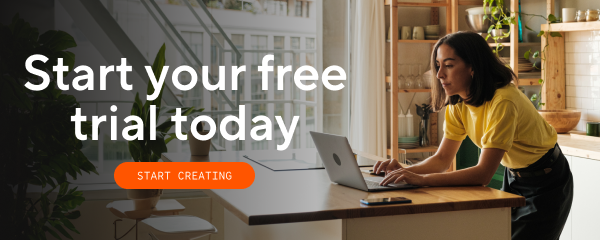Bigger isn’t always better, especially in the case of images you’re using online.
Take any photo or high-resolution graphic and you might notice that the size is a little bigger (or even a lot bigger) than your website can handle.
Using it as part of your web design means your website is likely to lag or just stop loading. So, what should you do?
Optimize that image!
Image optimization is simply shrinking the file size of an image without sacrificing its quality too much – so it still looks good but is going to help your website load MUCH faster.
And when you have a website that loads faster, you create a better user experience. Plus, it’s good for SEO, because search engines want to send people to websites that aren’t slow.
Consider the ways image optimization is crucial for your Core Web Vitals, the key performance metrics used by Google to assess user experience on a webpage:
- Largest Contentful Paint (LCP): a measurement of how long it takes for the largest image on your website to load, which can be improved with optimized images
- · Cumulative Layout Shift (CLS): a measurement of how much the elements of a page shift as they load, which can be improved when an image has the proper height and width attributes
- First Delay Input (FDI): a measurement of the delay between when you take an action, such as clicking a link or typing in a form, and the browser starting the process of that action, which can be improved when you don’t have large images your browser doesn’t have to focus on
In short, if you want to improve the overall speed and functionality of your website (and let’s be real, who wants to sit around and wait for a website to load?), then you need to optimize your images for the web. That’s easy enough to do when you’re working with the right tools.
Why Image Optimization Matters for Websites

Tech power is like human power in some ways, when you’re asking a lot of it, you have to expect it to work a little harder and move a little more slowly. Makes sense, right?
So when you’re putting a large high-resolution image file on your website, it’s almost like asking your website to lug a 100-pound weight around. It’s going to take a while for your website to get stuff done!
That’s why a website with a lot of large images won’t load quickly. It’s almost as if your website is trying to set a bunch of 100-pound weights in place. And when your website loads slowly, search engines perceive it as less user-friendly.
Search engines don’t want to direct traffic to websites people don’t want to use, so your website’s slow loading time could end up affecting its SEO and Google rankings.
That’s not great, because essentially those big beautiful images you thought looked so great on your website are actually the reason you’re not showing up in search results.
Worth noting: Search engines are doing what’s known as mobile-first indexing.
That means they’re giving higher rank to websites built for mobile devices.
It makes sense because most people are looking at websites on their phones these days.
But many websites are built for computer screens, not for phone screens. Part of image optimization means making your images responsive, so they adjust to the type of screen they’re being viewed on.
Features to Look for in Image Optimization Tools
You might be sitting here and reading all this with the thought, “Great! So, what am I supposed to do with all these high-res images?” Before you go overloading your website design, you can quickly and efficiently optimize all your images for the web with one of several of the optimization tools in 2025.
When you’re choosing a web optimization tool, look for one with the following features:
- Compression quality: You want a tool that is going to compress (i.e. shrink) your images via lossless compression, which reduces the file sizes without losing image data or quality, instead of lossy compression, in which some image data will be lost and the quality potentially diminished.
- Bulk processing capabilities: You don’t have the time to go through and compress each image individually, especially if you’re somebody who is working with lots of photos—we’re looking at you, photographers and your extensive galleries. You want a tool that lets you optimize images in bulk to save you some time.
- Support for modern image formats: When you’re choosing a tool, you should select one that’s able to handle image formats like WebP, AVIF, and JPEG XL.
- Integration with CMS platforms: Once you optimize your images, you’re going to need to upload them to your site, so choose an optimization tool that will work with platforms like WordPress and Shopify.
- Automation and AI-powered optimization: Remember how we talked about bulk optimization? Not every image needs to be optimized in the same way, so you want to find a tool that uses AI to determine specifically what needs to be done with each image and automates the task without your having to change any settings.
Top Image Optimization Tools of 2025
Ready to optimize?
Great! You’ve got options when it comes to optimization—lots of options.
Alongside thinking about what features you need from an image optimization tool, think about what type of access you want to have.
Do you want something to simply use online via your internet browser? Or do you want something you can access through your website platform, or even from your computer desktop?
Consider these options:
Online Image Optimizers
These are the optimizers you can access directly through your internet browser by going to the website. They’re pretty straightforward, but they get the job done well enough.
You’ve got TinyPNG, which is a simple, effective tool for PNG and JPEG compression.
If you want to do advanced compression with various formats, try Compressor.io. And then for high-quality bulk images, there’s Kraken.io.
WordPress Plugins for Image Optimization
If you’re looking for the best WordPress image optimizer, consider a plug-in like ShortPixel or Smush for automated AI-powered optimization. Imagify is also a WordPress plug-in and it offers WebP conversion and fast compression.
Desktop & Developer Tools
For anyone working directly from their desktop, RIOT (Radical Image Optimization Tool) could be a great option—it’s free Windows software that lets you compress images quickly and efficiently.
Mac users can try ImageOptim, an open-source tool for lossless compression. Finally, there’s Squoosh by Google, a Browser-based tool with detailed compression controls.
AI & Next-Gen Optimization Tools
When it comes to AI and next-gen options, consider working with VanceAI Image Compressor for AI-powered image enhancement and compression or Cloudinary for Cloud-based image management with automation.
Best Practices for Image Optimization in 2025
Before you move full-steam ahead on optimizing your images, there's some best practices you should keep in mind.
First, be sure to choose the right file format for your images.
WebP offers better compression than JPEG while maintaining high quality and supports transparency, making it ideal for web performance.
AVIF provides even higher compression efficiency and better quality at lower file sizes than WebP but has slightly less browser support, whereas JPEG is widely compatible but results in larger files with lower efficiency compared to both WebP and AVIF.
Second, take advantage of lazy loading.
This is a technique that delays the loading of non-essential images until they are needed, improving page speed and performance. Instead of loading all images immediately when a page loads, it loads only the ones visible in the viewport and fetches others as the user scrolls.
Be sure you leverage CDNs, aka Content Delivery Networks, for faster global delivery. These improve website speed by distributing your images and other assets across multiple global servers, ensuring faster delivery to users regardless of their location.
Finally, be sure to maintain a balance between quality and compression.
Yes, you want your images to be smaller in size, but not so much that they compromise the quality of the image.
If the picture loses too much data, it becomes grainy and pixelated. Be sure to use an optimization tool that is going to give you compressed images that still look great and reflect your professionalism. Otherwise, what’s the point, right?
Main Takeaway
Optimizing your images for your website is a crucial step that improves your website speed (good for SEO), but it’s important to take the care you need so you don’t end up with reduced quality.
The best approach? Experiment with different tools based on your website’s needs and find the one that feels the most user-friendly while giving you the best results.
If you want to see how those optimized images look on a beautifully designed Showit website? Don’t forget that you have a 14-day free trial waiting for you with no commitment necessary. Sign up and get started!


